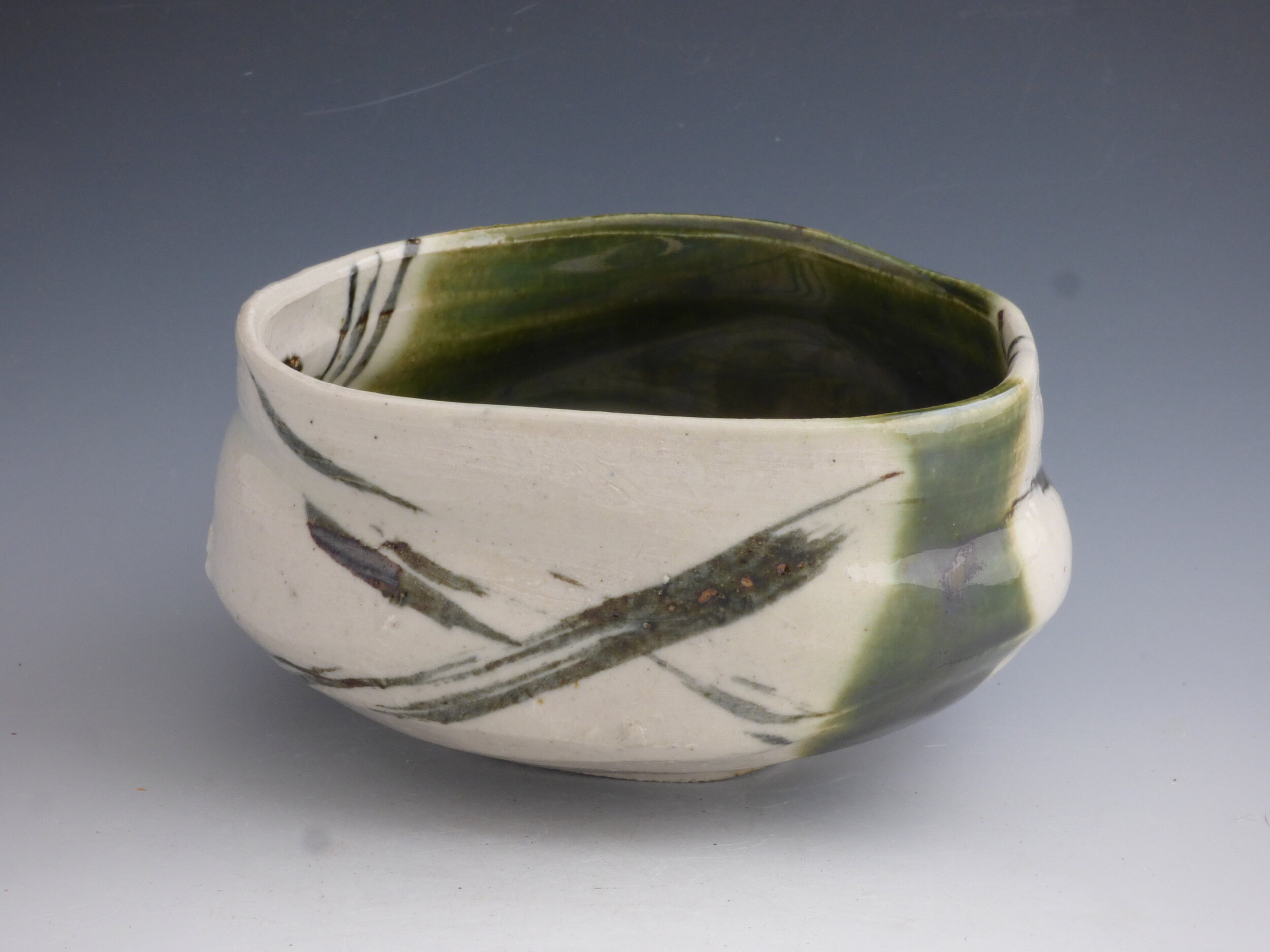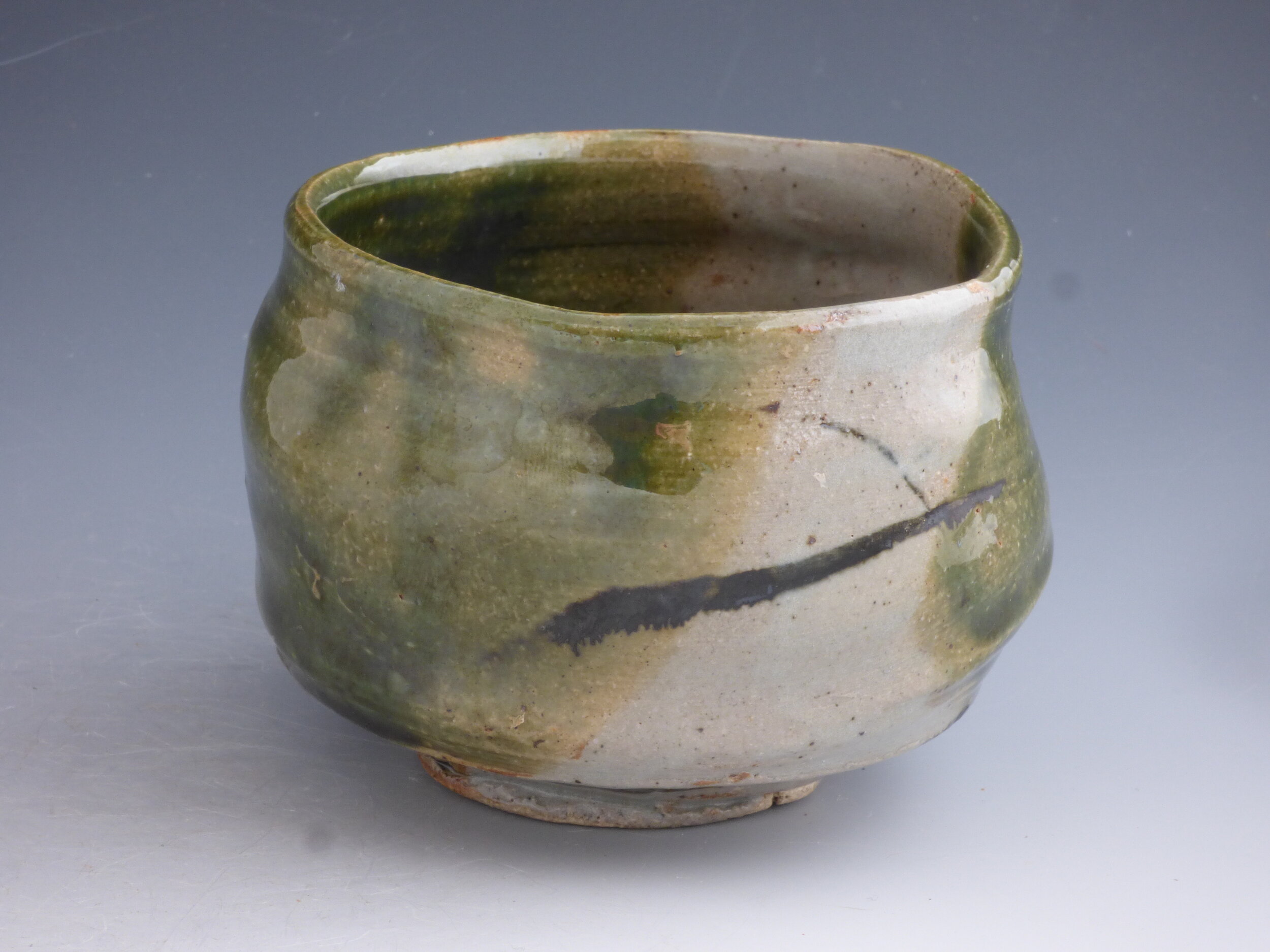
Oribe Tea Bowls (Chawan)
Faruta Oribe (1543 - 1615)was a warrior and the foremost tea master of his time. Sen no Rikyu was Oribe’s teacher. These ceramics that bear his name are the product of his unique artistic insights into the tea aesthetics of wabi and sabi. They brought new color into tea ceremony ceramics. Oribe believed that there were many ways to arrive at the same destination and that rules were made to be broken. In this spirit, he directed the creation of these vessels whose forms were wild, almost savage things. They flouted tea aesthetics of the time, with their unexpected forms, their asymmetrical fields of jade green glaze and the iron painted patterns and images on their white surfaces. Yet his innovations, given his name posthumously, reside in the heart of the tea ceremony (Chanoyu). My bowls on these pages pay tribute to Oribe’s great insights. The white fields framed by green are the canvas for abstract expressionist painting, marrying the insights of Pollack, de Kooning, and Kline with the traditions of Furuta Oribe.






